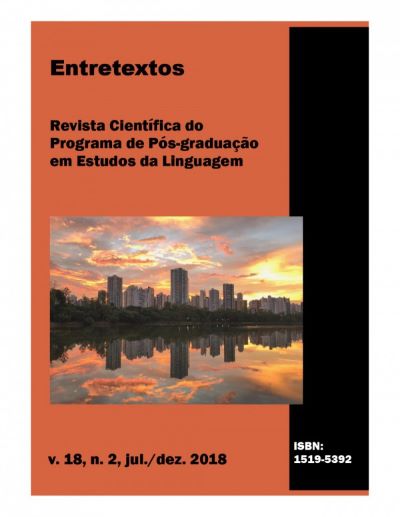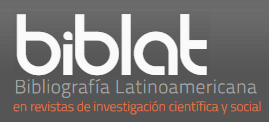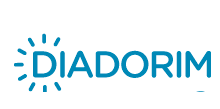Hedging strategies: a comparative study between Brazilian Portuguese and English
DOI:
https://doi.org/10.5433/1519-5392.2018v18n2p5Keywords:
Hedges, Academic writing, Corpus Linguistics, Transfer.Abstract
This work aims at describing the use of hedging strategies in research articles written by Brazilians in Portuguese and in English and articles written by North American natives in English, and the possible linguistic transfers from their mother tongue. After a theoretical study of the academic writing and a brief explanation about the genre research article, we present some definitions of hedges, as well as their uses and functions in academic texts. Secondly, we describe the methodology based on the principles of Corpus Linguistics. The analyzed corpus consists of 30 research articles: 10 written in Brazilian Portuguese, 10 written in English by native speakers of Portuguese and 10 written in English by North American native speakers. The analysis and discussion of the data were based on the taxonomies proposed by Hyland (1998, 2000). The results showed some differences in the two corpora written by Brazilians in relation to the native English corpus, which may indicate possible transfers between languages. This work, therefore, contributes to the area of specialized text studies, as well as to the area of contrastive studies and the teaching of languages for specific purposes.Downloads
References
ANTHONY, Laurence. AntConc (Version 3.4.3) [Computer Software]. Tokyo: Waseda University, 2014. Disponível em: http://www.laurenceanthony.net/. Acesso em: 5 abr. 2019.
BERBER-SARDINHA, Tony. Linguística de corpus. São Paulo: Manole, 2004.
BHATIA, Vijay. Applied genre analysis and ESP. In: MILLER, Tom (ed.). Functional approaches to written text: classroom applications. Washington: United States Information Agency, 1997.
BROWN, Penelope; LEVINSON, Stephen. C. Politeness: some universals in language usage. Cambridge: Cambridge University Press, 1987.
CARVALHO, Ednúsia Pinto. Marcas de atenuação retórica: um estudo contrastivo. 2011. Tese (Doutorado) - Universidade Federal do Ceará, Fortaleza, 2011.
CLYNE, Michael. The sociocultural dimension: the dilemma of the German speaking scholar. In: SCHRODER, Hartmut (ed.). Subject-oriented texts. Languages for special purposes and text theory. Berlin: De Gruyter, 1991. p. 49-68.
CONNOR, Ulla. Contrastive rhetoric: cross-cultural aspects of second language writing. New York: Cambridge University Press, 1996.
GALTUNG, Johan. Deductive thinking and political practice: an essay of the teutonic intellectual style. In: GALTUNG, Johan (ed.). Papers on methodology, essays on methodology. Copenhagen: Ejlers, 1979. v. 2.
HINKEL, Eli. Indirectness in L1 and L2 academic writing. Journal of Pragmatics, Amsterdam, v. 27, n. 3, p. 360-386, 1997.
HYLAND, Ken. Disciplinary discourses: social interactions in academic writing. London: Longman/Ann Arbor, 2000.
HYLAND, Ken. English for academic purposes: an advanced resource book. New York: Routledge, 2006.
HYLAND, Ken. Hedging in academic writing and EAP textbooks. English for Specific Purposes, New York, v. 13, n. 3, p. 239-256, 1994.
HYLAND, Ken. Hedging in scientific research articles. Amsterdam: John Benjamins Publishing Company, 1998.
HYLAND, Ken. The author in the text: hedging scientific writing. Hong Kong Papers in Linguistics and Language Teaching, Pokfulam, HK, v. 18, p. 33-42, 1995.
KADAR-FULOP, Judith. Culture, writing, and curriculum. In: PURVES, Alan C. (ed.). Writing across languages and cultures: issues in contrastive rhetoric. Newbury Park, CA: Sage Publications, 1988. p. 25-50.
KELLERMAN, Eric. The empirical evidence for the influence of the L1 in interlanguage. In: DAVIES, Alan; CRIPER, Clive; HOWATT, Anthony P. R. (ed.). Interlanguage. Edinburgh: Edinburgh University Press, 1984. p. 98–122.
KROLL, Barbara. Considerations for teaching na ESL/EFL writing course. In: CELCE-MURCIA, Marianne (ed.). Teaching English as a second/foreign language. Boston: Heinle & Heinle, 2001. p. 219–232.
LACKSTROM, John E.; SELINKER, Larry; TRIMBLE, Louis. Grammar and technical english. English Teaching Forum, Washington, v. 10, n. 5, p. 3-14, 1972.
LAKOFF, George. Hedges: a study in meaning criteria and the logic of fuzzy concepts. Journal of Philosophical Logic, Dordrecht, NL, v. 2, p. 458-508, 1973.
MARKKANEN, Raija; SCHRODER, Hartmut. Hedging and its linguistic realizations in German, english and finnish philosophical texts: a case study. Vaasa: Vaasan Korkeakoulu, 1988a.
MARKKANEN, Raija; SCHRODER, Hartmut. Hedging as a translation problem in scientific texts. In: LAUREN, Christer; NORDMAN, Marianne (ed.). Special language: from human thinking to thinking machines. Clevedon, AV: Multilingual Matters, 1988b. p. 171-180.
MCENERY, Tom; HARDIE, Andrew. Corpus linguistics: method, theory and practice. Cambridge: Cambridge University Press, 2012.
MOLSING, Karina Veronica; PERNA, Cristina Becker Lopes. The pronominal use of -se in brazilian portuguese academic writing. Unpublished Manuscript, 2014.
NEARY-SUNDQUIST, Colleen. The use of hedges in the speech of ESL learners. Elia: Estudios de Linguistica Inglesa Aplicada, Madrid, v. 13, p. 149, 2013.
ODLIN, Terence. Language transfer: cross-linguistic influence in language learning. New York: Cambridge U. P., 1989. OXFORD advanced learner’s dictionary. Oxford: Oxford University Press, 2005.
PURVES, Alan C. Introduction. In: PURVES, Alan C. (ed.). Writing across languages and cultures: issues in contrastive rhetoric. Newbury Park, CA: Sage Publications, 1988. p. 9-21.
REZENDE, Patrícia Almeida; HEMAIS, Bárbara. Análise comparativa de artigos científicos da área da saúde. The ESPecialist, São Paulo, v. 25, n. 2, p. 131-152, 2004.
ROUNDS, P. Hedging in written academic discourse: precision and flexibility. Michigan: University of Michigan, 1982. Mimeo.
SHARWOOD-SMITH, Michael A. On first language loss in the second language acquirer: problems of transfer. In: GASS, Susan M.; SELINKER, Larry (ed.). Language transfer in language learning. Rowley, MA: Newbury House, 1983. p. 222–231.
SHEN, Fan. The classroom and the wider culture: identity as a key to learning English composition. College Composition and Communication, Urbana, v. 40, p. 459-66, 1988.
UYSAL, Hacer Hande. Argumentation across L1 and L2 writing: exploring cultural influences and transfer issues. VIAL: Vigo International Journal of Applied Linguistics, Vigo, GZ, n. 9, p. 133-519, 2012.
VARTALLA, Teppo. Remarks on the communicative functions of hedging in popular scientific and specialist research articles on medicine. English for Specific Purposes, New York, v. 18, n. 2, p. 177-200, 1999.
ZUCK, Joyce G.; ZUCK, Louis V. Hedging in news writing. In: CORNU, AnneMarie VANPARIJS, Johan; BATEN, Lut (ed.). Beads or bracelet? How do we approach LSP? Oxford, OX: Oxford University Press, 1987. p. 172-181.
Downloads
Published
How to Cite
Issue
Section
License
Entretextos adota a Licença Creative Commons Attribution 4.0 International, portanto, os direitos autorais relativos aos artigos publicados são do(s) autor (es).
Sob essa licença é possível: Compartilhar - copiar e redistribuir o material em qualquer suporte ou formato. Adaptar - remixar, transformar, e criar a partir do material, atribuindo o devido crédito e prover um link para a licença e indicar se mudanças foram feitas.




















